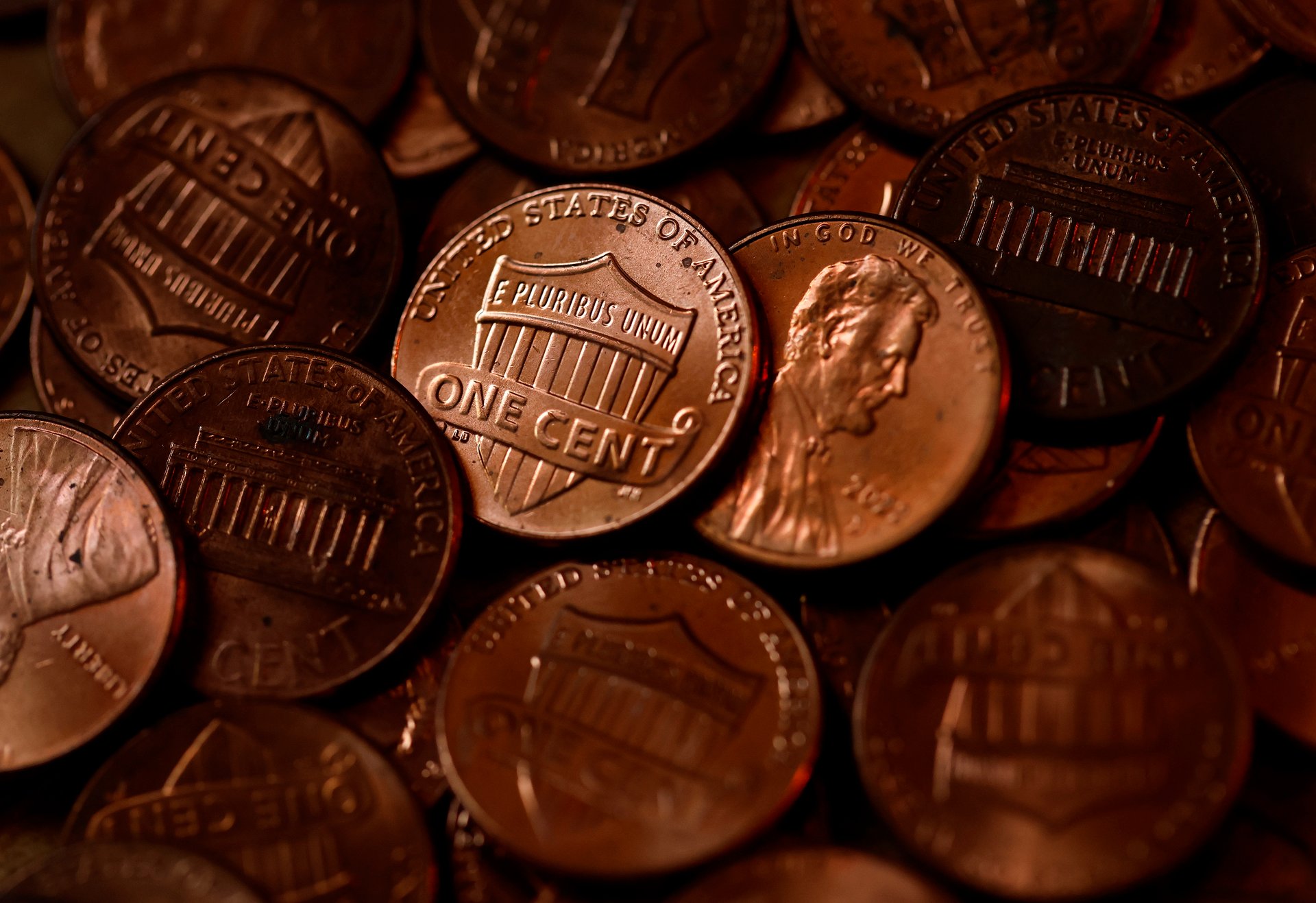The U.S. is getting rid of the penny
Say goodbye to the penny: The Trump administration has ordered the U.S. Mint to phase out one-cent coins. It's causing headaches among retailers

In this photo illustration, pennies are displayed on October 31, 2025 in San Anselmo, California. (Justin Sullivan/Getty Images)
Reports of the penny's death are not greatly exaggerated.
Suggested Reading
This time, the American penny will experience a timely demise two centuries after it first started circulating as legal tender but plunged to junk status in the modern economy.
Related Content
The U.S. Mint on Wednesday will mint the final pennies in Philadelphia, first developed in 1793. It has long lost its luster among Americans given the enormous erosion in its purchasing power.
A staggering amount of pennies still move around as tender, whether in cash registers or parked in a child's piggy bank. The Treasury Department estimates that 300 billion one-cent coins are still in circulation, or three times the amount of stars that can be observed in the Milky Way galaxy.
President Donald Trump ordered the U.S. to stop minting pennies earlier this year, assailing them as a currency that's too expensive to mint. Last year, each penny cost nearly four cents to produce, a money-losing endeavor that for some critics perfectly illustrated federal waste.
“For far too long the United States has minted pennies which literally cost us more than 2 cents,” Trump wrote in a February social media post in the middle of the Super Bowl. “This is so wasteful!”
The Treasury expects to save $56 million a year by canceling penny production. Americans, though, can still use their pennies as they wish — or throw them away as some do.
However, Trump's move to phase out the penny is causing headaches among retailers which still depend on the coin to give exact change to customers. The National Retail Federation has warned that retailers lack guidance on rounding their transactions since federal and state law bars it in many instances.
Bills have been put forward in Congress that would allow retailers to round their transactions to five-cent increments either up or down.
